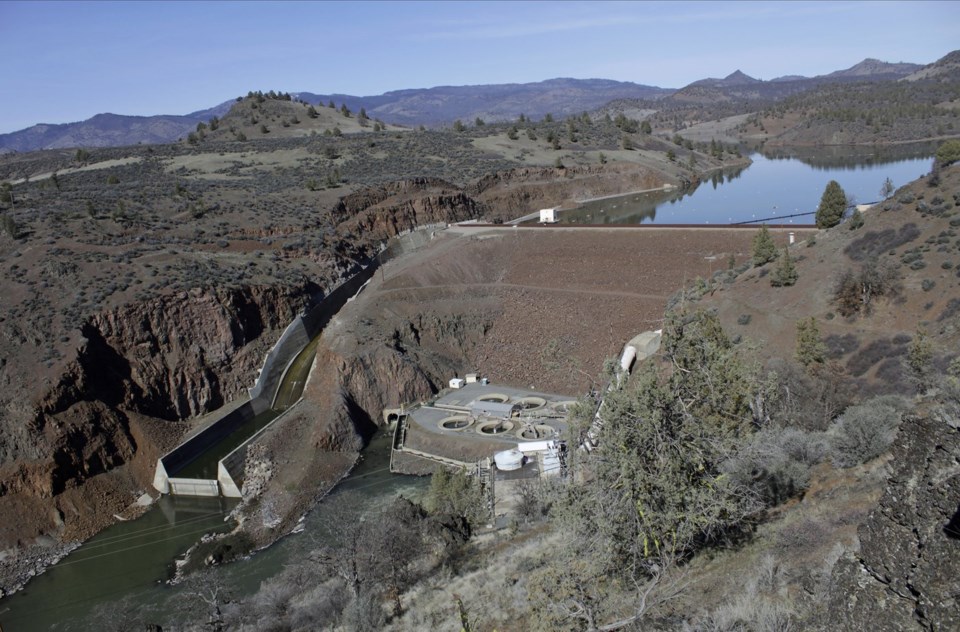HORNBROOK, Calif. (AP) — For the first time in more than a century, salmon are swimming freely along the Klamath River and its tributaries — — just days after the in U.S. history was completed.
Researchers determined that Chinook salmon began migrating Oct. 3 into previously inaccessible habitat above the site of the former Iron Gate dam, one of four towering dams demolished to let rivers return to their natural flow and to restore ecosystems for fish and other wildlife.
“It’s been over one hundred years since a wild salmon last swam through this reach of the Klamath River,” said Damon Goodman, a regional director for the nonprofit conservation group California Trout. “I am incredibly humbled to witness this moment and share this news, standing on the shoulders of decades of work by our Tribal partners, as the salmon return home."
The dam removal project , marking a major victory for local tribes that fought for decades to free hundreds of miles (kilometers) of the Klamath. Through protests, testimony and lawsuits, the tribes showcased the environmental devastation caused by the four hydroelectric dams, especially to salmon.
Scientists will use SONAR technology to continue to track migrating fish including Chinook salmon, Coho salmon and steelhead trout throughout the fall and winter to provide "important data on the river’s healing process,” Goodman said in a statement. “While dam removal is complete, recovery will be a long process.”
Conservation groups and tribes, along with state and federal agencies, have partnered on a monitoring program to record migration and track how fish respond long-term to the dam removals.
As of February, more than 2,000 dams had been removed in the U.S., the majority in the last 25 years, according to the advocacy group American Rivers. Among them were dams on Washington state’s Elwha River, which flows out of Olympic National Park into the Strait of Juan de Fuca, and Condit Dam on the White Salmon River, a tributary of the Columbia.
The Klamath was once known as the third-largest salmon-producing river on the West Coast. But after power company PacifiCorp built the dams to generate electricity between 1918 and 1962, the structures halted the natural flow of the river and disrupted the lifecycle of the region’s salmon, which spend most of their life in the Pacific Ocean but return up their natal rivers to spawn.
The fish population dwindled dramatically. In 2002, a bacterial outbreak caused by low water and warm temperatures killed more than 34,000 fish, mostly Chinook salmon. That jumpstarted decades of advocacy from tribes and environmental groups, culminating in 2022 when federal regulators .
The Associated Press




